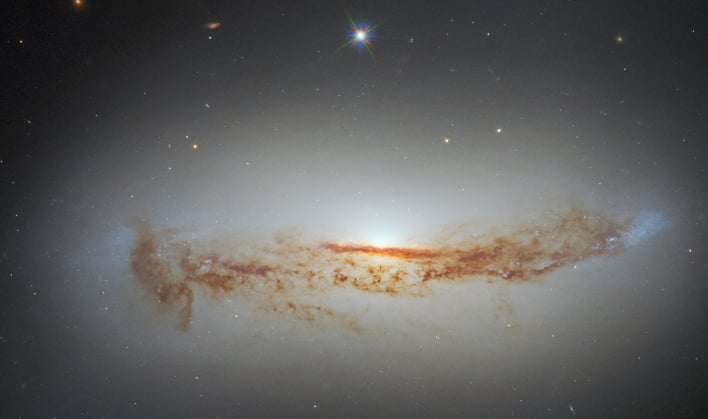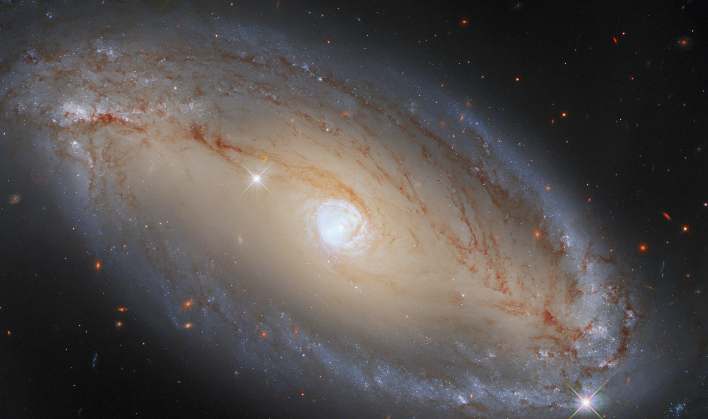Hubble Takes Mesmerizing Photo Of A Supermassive Black Hole With Tendrils Of Dark Dust

The Hubble Space Telescope continues to take incredible images of distant galaxies since its launch in 1990. In fact, the telescope was only expected to be operational for around 15 years, but due to upgrades and maintenance, it remains scientifically productive today and could remain operational into the late 2020s and beyond. One of its most recent photos captures the spiral galaxy of NGC 7172 which resides in the constellation Piscis Austrinus.
In the image, the artery of dust threading its way across NGC 7172 overshadows the radiant heart of the galaxy. This makes the galaxy seem to be nothing more than a typical spiral galaxy viewed from the side. However, when astronomers peered at NGC 7172 across the electromagnetic spectrum, they discovered there is more than meets the eye. The galaxy is in fact a Seyfert galaxy with an intensely luminous active galactic nucleus powered by matter accreting onto a supermassive black hole.

The top image was created by combining data from two sets of Hubble observations, both proposed to study nearby active galactic nuclei. It also combines data from two of the instruments aboard Hubble, Hubble’s Advanced Camera for Surveys and Wide Field Camera 3.
As the James Webb Space Telescope continues to ready itself to begin taking images of deep space, Hubble is not sitting around collecting space dust. It continues to capture brilliant images of galaxies and other objects in space and should continue to do so for the next decade. Astronomers and scientists here on Earth will be using those images in correlation with JWST to hopefully unlock and reveal even more secrets to our Universe.
Top Image Credit NASA/ESA

